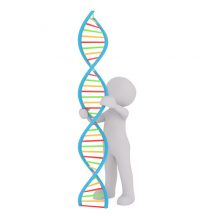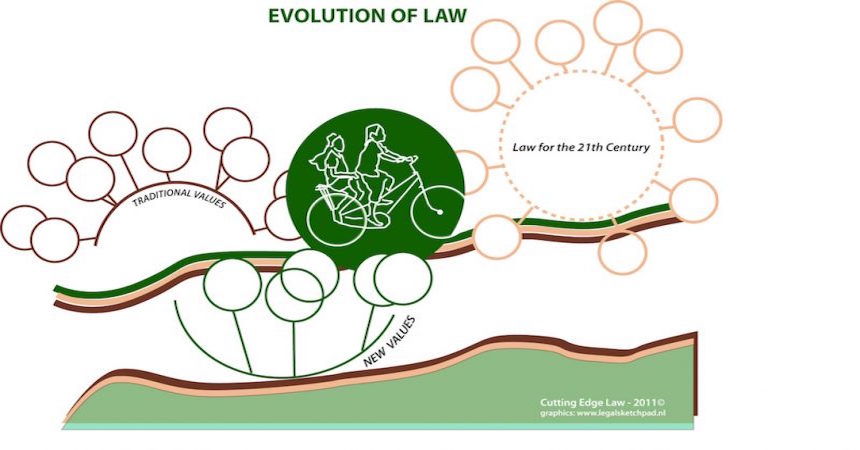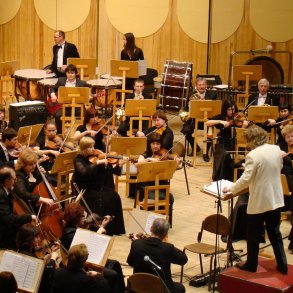By J. Kim Wright for Enlivening Edge Magazine
When I first read Reinventing Organizations, I was so excited that I contacted Frederic Laloux and went to his home in Belgium to meet him (and his wonderful family). For more than two decades, I have been engaged in a movement in law that parallels the organizational transformations Frederic has written about. For nine years, I have been traveling the world as a nomad, seeking out the lawyers who are practicing in a new consciousness, who are inventing new models and courageously stepping outside the traditional adversarial models.
Integrative Law is a new wave of legal practices that are being developed and implemented all over the globe to serve the same needs and purposes as the conventional legal system, but to do so in a way that is far more likely to generate productive outcomes, heal broken relationships, address not only the conflict but also deal effectively with the conditions that gave rise to the conflict, and thus, turning conflict into an opportunity to co-create a better world for all. ~Linda Alvarez, Author of Discovering Agreement, Contracts that Turn Conflict into Creativity, ABA, 2016.
Law as DNA
 Law is like an invisible force that surrounds us, telling us to drive on the right or left, who we can marry, when we are divorced, and often stops us when we have crossed the line of what is socially acceptable. I chose the law because I wanted to change the world, and I thought a legal education would help me understand the legal system. Even then, I recognized that Law was the framework for society, that if the law changed, it had a big impact on society–and that when consciousness changed, the law had to change to keep up.
Law is like an invisible force that surrounds us, telling us to drive on the right or left, who we can marry, when we are divorced, and often stops us when we have crossed the line of what is socially acceptable. I chose the law because I wanted to change the world, and I thought a legal education would help me understand the legal system. Even then, I recognized that Law was the framework for society, that if the law changed, it had a big impact on society–and that when consciousness changed, the law had to change to keep up.
A System in Need of Change
The evolution of law reflects the evolution of society, although admittedly, our profession doesn’t change as fast as others. That is partly by design: law is based on precedent. Much, but not all, of the legal system is based on old values and concerns of the past. The procedures were designed by people who lived in a different era and just modified as we’ve gone along. Law is designed to look backwards, at precedents, so things don’t change too fast. It provides stability for society and keeps us from just jumping on fads. In the language of Spiral Dynamics, it provides the necessary Blue structure, an important element of Teal/Yellow/Integrative/Second Tier social systems.
An integrative approach to law involves a mindshift towards understanding that a legal system is a fluid and dynamic system, inextricably woven into the fabric of the society it is expected to contain.
We are at a moment in legal history that requires a fundamental reorganization towards problem-solving and a new operating system to successfully address our global epidemic of chronic conflict. Old legal practices and court models produce fragmented, compartmentalized outcomes which do not resolve the core problems or produce positive societal or individual satisfaction.
Lawyers and law firms need to start shifting consciously from a rigid, hierarchical, left-brain, win/lose mindset to a more intuitive, inclusive, inter-connected worldview. These shifts will not only change the perception of the legal profession in the public’s eye but will also allow lawyers to fulfill their client’s needs in a more authentic way. All over the world new legal practices and processes are arising in response to these issues. ~Amanda Lamond, Director, Centre for Integrative Law, South Africa
My interest in systems change also led me to study integral theory, and to be certified in Spiral Dynamics and Theory U. I also became a fan and practitioner of the Berkana Two-Loops model.
Hungry for tools to build a better world, I started learning and applying them in the laboratory of building a better legal system.
Over these decades, I have seen a lot of change and some significant transformation in law. About fifteen years ago, I went to a bar association meeting. At lunch, we were asked to introduce ourselves to the folks sitting at our tables of 8. I introduced myself as a peacemaker, working to make law a healing profession. Seven people (the whole rest of the table) suddenly saw someone they knew across the room. They got up and found other places to sit. They left me sitting there alone.
Ten years later, the American Bar Association, the most mainstream of all legal organizations, asked me to write a book, and Lawyers as Peacemakers, Practicing Holistic, Problem-Solving Law became an immediate best-seller. In December, 2016, my second book, Lawyers as Changemakers, The Global Integrative Law Movement was published and was the CyberMonday best-seller. To me, the shift from my earlier experience of being shunned is evidence that human consciousness is shifting.
Integrative law is a context for law, more of a lens than a practice area. It is like putting on 3D glasses—your perception of the world changes. The Integrative Law “glasses” have to do with seeing the legal system as an interconnected system of human beings. The Integrative Law approaches are expressions of the interconnected view of the world that arise in many different contexts. ~ Glenn Meier, Las Vegas, Nevada, USA
What is a Teal Lawyer?
When I talk about Integrative Law, I often talk about some of the emerging models. The new models are based on a more-conscious worldview. They are less competitive and more focused on problem-solving, less about fighting and more about workable solutions. They are relational. In my recent book, I explored four pillars of integrative law:
- Integrative Lawyers are Reflective. Many practice meditation or yoga. They seek wholeness in their lives.
- Integrative Lawyers are Values-Based. They align their lives and practices with their personal values and they help their clients align their actions with values, too.
- Integrative Lawyers are Systems-Thinkers who see the interconnectedness of all things.
- Integrative Lawyers operate in Integral Consciousness.
As the consciousness of lawyers shifts, they discover they can no longer work in the old system. Many leave law. Others invent, adopt, or adapt new models. There are dozens of models and approaches which allow lawyers to practice integratively. The models have emerged in many areas of law, and the skills of one model often get transferred to other settings.
For example, some of you might have heard of restorative justice. Restorative justice seeks to restore the fabric of a community when a harm has occurred. Generally a criminal law model, it is known for bringing offenders and victims face-to-face to dialogue. Victims can ask questions: Why was I chosen as victim? What happened to my stolen belongings? Offenders can apologize and offer restitution. Community members can participate in the conversations, and everyone seeks the solution that restores the victim, rehabilitates the offender, and mends the community. Many forms of restorative justice often utilize the circle process.
In Austin, Texas, USA, integrative lawyers Kristin Scheel Downes and Randy Langford have taken the principles of restorative justice and are using them in working with conflict resolution in businesses that use the cooperative business model.
Business lawyers also resonate with a model called Conscious Contracts. These contracts provide a private, internal legal system that bridges the legal requirements and the organizational values. Conscious legal documents recognize that Law and governance are inseparable. Operating agreements, contracts, and internal and external conflict resolution are inextricably intertwined with law.
Starting with the vision, values, and mission of the organization, conscious legal documents are written in user-friendly plain language. They apply the company’s values in the documents, designing their own conflict resolution system based on those values. For most, that means finding resolutions, rather than litigating. The process is owned by the people, not a judge who probably doesn’t share the values.
Integrative approaches are practiced by thousands, even tens of thousands, of lawyers who hold values like peace, love, understanding, and interconnectedness.
In future columns, I will explain more about these and other models and how they align with and support Teal Organizations.

J. Kim Wright is the author of two American Bar Association best sellers: Lawyers as Peacemakers, Practicing Holistic, Problem-Solving Law and Lawyers as Changemakers, The Global Integrative Law Movement. A lawyer since 1989, she is a systems change architect for the legal profession. She is an American nomad. www.jkimwright.com
Featured Image is by Susanne van der Meer of Siftvisuals




